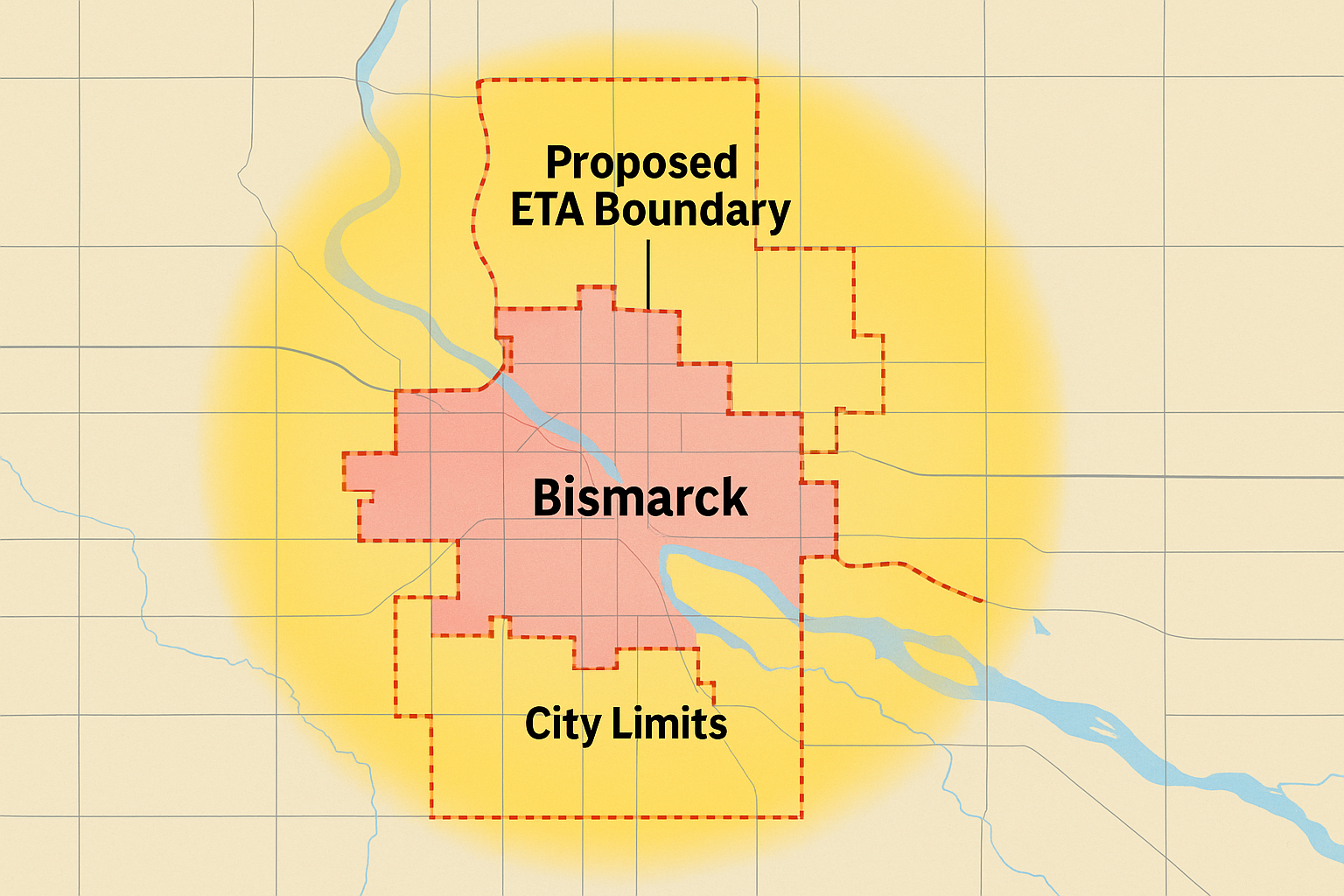With median home prices in Bismarck jumping to $375,000 in September (up ~21 % year-over-year), many local families are reconsidering where — and how — they live. The battle lines? Rural acreage vs. city convenience. It’s not just a lifestyle choice — today it’s one of survival in an overheated real estate market.
Homes in Bismarck now sell in ~30 days on average — faster than last year. The city has adopted a Growth Phasing Plan that identifies areas just outside city limits for future annexation and development.
The city planning staff recently suggested adjustments to the Extraterritorial Area (ETA) boundary to better manage expansion.
Apple Creek Township, just outside Bismarck, channels the “rural living, close to city” vibe for homeowners who still commute. But rural roads remain a challenge: gravel surfaces, snow removal delays, and limited services are real trade-offs. Some rural Burleigh County residents fear being pulled into future city jurisdictions through annexation.
What’s Driving the Shift
1. Affordability pressure in the city
As city lot prices and home values rise, buyers stretch budgets or head outward. Those seeking more space see rural plots as the only option.
2. Infrastructure & growth planning
Bismarck’s proposed ETA map redraws expansion zones — potentially pulling rural properties into the city proper.
“We’re discussing whether land 2–4 miles out will still be rural or in city control in the next 20 years,” said a Burleigh planning staffer during recent review.
3. State-level housing funding scarcity
North Dakota legislators allocated just $35 million toward housing programs this last session — far below proposals from governors. That leaves builders chasing margins and often leaning toward cheaper rural land to make projects viable.
4. Zoning & regulatory changes looming
New subdivision and zoning rules are expected in Bismarck by end of 2025, aimed at simplifying in-city development. The hope: more infill, better city density, fewer outward pushes.
Developer voice:
“We’re working on a 15-lot rural subdivision just west of Apple Creek,” said developer Mark Ellis. “Buyers want privacy and land, but still want 20-minute access to the core.”
Rural resident:
“We love the peace, but after heavy snow, our road is often impassable for days,” said Karen Larson of rural Burleigh County.
City planner:
“Annexation is inevitable in some zones,” said Bismarck planner Daniel Nairn. “What we need to know is how to manage it fairly — in taxes, services, and identity.”
Trends to Watch
Trend | Implication |
|---|---|
ETA boundaries revised | Some rural parcels may face city taxes, code, services |
Zoning overhaul in Bismarck | Easier in-city development may slow outward sprawl |
State housing incentives | If funding returns, rural and city housing both may benefit |
Infrastructure costs | Extending utilities to rural developments remains expensive |
Whether you’re a homeowner, renter, or aspiring buyer in Bismarck, this isn’t just talk — it’s your property, your commute, your tax bill, your future. If you're considering rural land or urban lots, stay informed about the ETA map updates, city planning meetings, and tax changes.
As Bismarck’s real estate landscape stretches outward, the city-rural divide becomes more than philosophical; it’s financial, regulatory, and existential. Residents must decide: do you invest now, adapt to change, or fight to preserve your slice of rural life?



